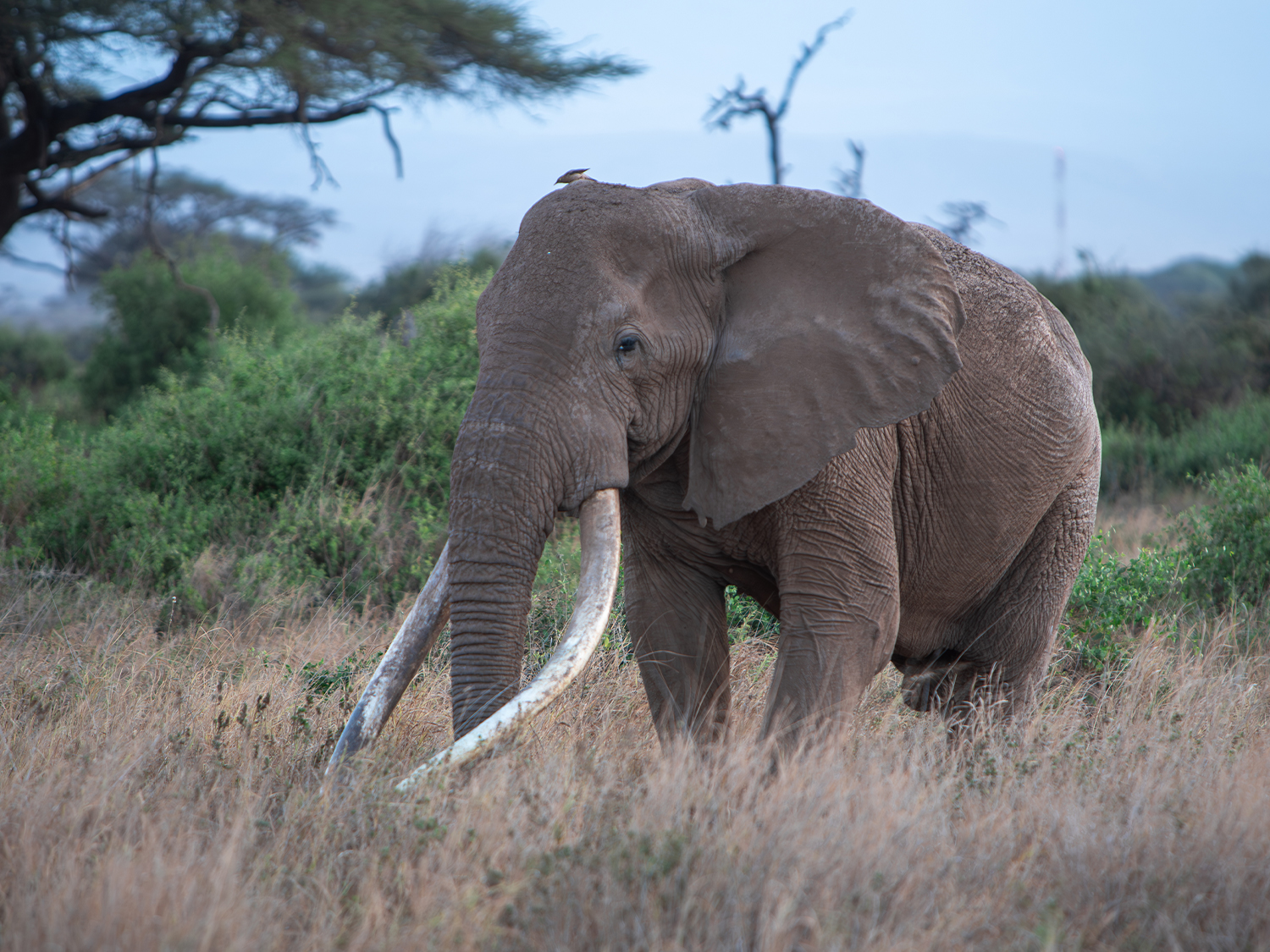The transboundary landscape of Northern Tanzania, bordering Kenya, is a conservation jewel that is home to the world famous Amboseli National Park – a UNESCO World Heritage Site and Biosphere Reserve (places recognised for their significant conservation value and potential to drive sustainable development).
Amboseli is known for three things: majestic herds of elephants, breathtaking views of Mt Kilimanjaro in neighbouring Tanzania, and big tuskers.
With tusks so long they almost drag on the ground as he roams through the East African savannah, Craig is one of the most famous elephants in the park: renowned as a ‘Super Tusker’, he is one of the last few of his kind still alive.
These older male African savannah elephants have been hunted for centuries, diminishing their population to fewer than 30 today.
Poaching poses a threat to all elephants but Super Tuskers like Craig are sought out for their impressive ivory, fuelling an illegal trade network funded by international criminal networks exploiting a global demand for ivory and other products.
Not only does this trade cost the lives of individual elephants, but it sends ripple effects throughout entire ecosystems.
Super Tuskers lead the way
At 53 years old, Craig has survived longer than many other elephants. He is less aggressive than most males—which explains why his tusks are in pristine condition; he hasn’t broken them in combat.
Like other Super Tuskers, he plays a crucial social role in his all-male bachelor herd, helping keep unruly, younger elephants in check, controlling their aggression and teaching them survival skills.
A ripple effect
Both male and female elephants are slaughtered for their tusks, but when females are killed, the tragedy is heightened—often, they leave behind calves, many of which fail to survive.
The bulls, active males in their reproductive prime, are critically important for breeding and spreading vital genetic diversity to their offspring. Killing Super Tuskers threatens the genetic integrity of populations, jeopardising their future existence.
It also reduces the ability for elephants to perform their necessary functions as ecosystem engineers—dispersing seeds, fertilising the soil, creating food and water sources for other animals, and sequestering carbon from the atmosphere.
Last year, two more Super Tuskers were killed in the transboundary landscape of Northern Tanzania. Hunting elephants for trophies is still allowed in Tanzania but prohibited in Kenya. Fortunately, Craig doesn’t usually roam past the border. But nature doesn’t see national boundaries and other elephants haven’t been so lucky.
The killings also pose a threat to Kenya’s wildlife tourism industry, a key sector in the country’s economy that provides sustainable livelihoods for about 1.6 million people.
That’s why the International Fund for Animal Welfare’s (IFAW’s) Room to Roam initiative embraces community involvement as the key to conservation success. We work with people closest to the animals and habitats we strive to protect, and develop and implement case-specific, co-designed strategies that promote human-wildlife co-existence.
IFAW’s experience clearly shows that when communities are engaged as key stakeholders, they are more likely to participate in wildlife protection programs benefitting their daily lives, even if those benefits are only indirectly linked to wildlife. For example, one of the ways we support those communities involves developing skills and promoting alternative, sustainable livelihood practices that do not solely rely on exploiting wildlife.
Our aims with programs such as Room to Roam are to increase biodiversity, build natural resilience to climate change, and create a future where animals and people can coexist and thrive.
By International Fund for Animal Welfare (IFAW)
Top Image: Craig the Super Tusker_Photo by IFAW
August 2025
